-
 Bitcoin
Bitcoin $105,045.4964
-2.69% -
 Ethereum
Ethereum $2,523.1428
-8.12% -
 Tether USDt
Tether USDt $1.0003
0.04% -
 XRP
XRP $2.1322
-4.95% -
 BNB
BNB $651.1269
-2.04% -
 Solana
Solana $145.0960
-8.59% -
 USDC
USDC $0.9999
0.02% -
 Dogecoin
Dogecoin $0.1769
-6.05% -
 TRON
TRON $0.2698
-1.70% -
 Cardano
Cardano $0.6324
-7.16% -
 Hyperliquid
Hyperliquid $40.5644
-5.20% -
 Sui
Sui $3.0163
-9.61% -
 Chainlink
Chainlink $13.1373
-8.80% -
 Bitcoin Cash
Bitcoin Cash $430.4956
-1.86% -
 UNUS SED LEO
UNUS SED LEO $9.0436
1.90% -
 Stellar
Stellar $0.2580
-5.85% -
 Avalanche
Avalanche $19.0739
-9.24% -
 Toncoin
Toncoin $2.9809
-6.53% -
 Shiba Inu
Shiba Inu $0.0...01191
-5.48% -
 Hedera
Hedera $0.1554
-7.47% -
 Litecoin
Litecoin $84.2778
-5.46% -
 Polkadot
Polkadot $3.8124
-6.03% -
 Ethena USDe
Ethena USDe $1.0004
0.00% -
 Monero
Monero $312.2453
-3.04% -
 Dai
Dai $0.9998
0.00% -
 Bitget Token
Bitget Token $4.5182
-4.00% -
 Uniswap
Uniswap $7.3870
-6.27% -
 Pepe
Pepe $0.0...01076
-11.47% -
 Aave
Aave $279.4127
-7.67% -
 Pi
Pi $0.5645
-9.30%
How to combine SAR with chip concentration? Is SAR more effective when it breaks through the chip concentration area?
SAR and chip concentration help traders identify potential reversals and key support/resistance levels in crypto markets for better trading decisions.
Jun 11, 2025 at 10:35 pm

Understanding SAR and Chip Concentration
In the realm of cryptocurrency trading, SAR (Stop and Reverse) and chip concentration are two important technical analysis tools that traders often use to make informed decisions. SAR, also known as Parabolic SAR, is a momentum indicator that helps traders identify potential reversals in the price direction of an asset. On the other hand, chip concentration refers to the distribution of ownership of a cryptocurrency, often visualized through a chip distribution chart. Understanding how these two concepts can be combined can provide traders with a more comprehensive view of market dynamics.
The Basics of SAR
SAR is a popular tool among traders for its simplicity and effectiveness. It appears as a series of dots on a chart, placed either above or below the price, depending on the current trend. When the dots are below the price, it indicates an uptrend, suggesting that traders should consider buying. Conversely, when the dots are above the price, it signals a downtrend, indicating a potential selling opportunity. The key to using SAR effectively is to monitor when the dots flip positions, as this can signal a trend reversal.
The Concept of Chip Concentration
Chip concentration provides insights into the distribution of a cryptocurrency's ownership among different holders. A chip distribution chart typically shows the number of addresses holding a certain percentage of the total supply. Areas of high concentration can indicate where significant support or resistance levels may exist, as large holders (often referred to as "whales") can influence price movements by buying or selling large volumes of the cryptocurrency.
Combining SAR with Chip Concentration
To combine SAR with chip concentration effectively, traders should follow these steps:
- Identify Key Chip Concentration Areas: Begin by analyzing the chip distribution chart to pinpoint areas where there is a high concentration of chips. These areas are likely to act as significant support or resistance levels.
- Overlay SAR on the Price Chart: Next, plot the SAR indicator on the price chart of the cryptocurrency you are analyzing. Look for the dots to determine the current trend.
- Monitor SAR Breakouts: Pay close attention to instances where the SAR dots flip positions. If the dots move from below to above the price (indicating a potential downtrend), or from above to below the price (indicating a potential uptrend), this could signal a significant price movement.
- Correlate SAR Breakouts with Chip Concentration: Finally, correlate the SAR breakouts with the identified chip concentration areas. If a SAR breakout occurs near a high concentration area, it could indicate a stronger signal for a potential price movement.
Effectiveness of SAR Breakthroughs at Chip Concentration Areas
The effectiveness of SAR when it breaks through a chip concentration area can be significant. When SAR breaks through a chip concentration area, it often suggests that the price has overcome a significant level of resistance or support, which can lead to more sustained price movements. This is because areas of high chip concentration are where large holders may be more inclined to buy or sell, thereby influencing the market more strongly.
For example, if the SAR dots flip from above to below the price near a high concentration area, it could indicate that the price has broken through a strong resistance level, potentially leading to a more robust uptrend. Conversely, if the SAR dots flip from below to above the price near a high concentration area, it might signal a strong downtrend as the price breaks through a significant support level.
Practical Application: A Case Study
To illustrate the combination of SAR and chip concentration, let's consider a hypothetical case study involving Bitcoin (BTC). Suppose the chip distribution chart shows a high concentration of chips at the $30,000 level. A trader would:
- Analyze the Chip Distribution Chart: Identify the $30,000 level as a key area of chip concentration.
- Plot SAR on the Bitcoin Price Chart: Observe that the SAR dots are currently below the price, indicating an uptrend.
- Monitor SAR Breakouts: Watch for the SAR dots to flip positions. If the dots move above the price near the $30,000 level, it could signal a potential downtrend.
- Correlate with Chip Concentration: If the SAR breakout occurs near the $30,000 level, it would suggest a strong signal for a potential price drop, as this level is where significant selling pressure might be encountered.
Using SAR and Chip Concentration for Entry and Exit Points
Traders can use the combination of SAR and chip concentration to determine optimal entry and exit points for their trades. Here’s how:
- Entry Points: When the SAR dots flip from above to below the price near a high concentration area, it could be an ideal entry point for a long position. This suggests that the price has broken through a significant resistance level, potentially leading to a more sustained uptrend.
- Exit Points: Conversely, when the SAR dots flip from below to above the price near a high concentration area, it might be a good time to exit a long position or enter a short position. This indicates that the price has broken through a significant support level, potentially leading to a more sustained downtrend.
Risk Management Considerations
While combining SAR with chip concentration can provide valuable insights, it is crucial for traders to also consider risk management strategies. Here are some key considerations:
- Set Stop-Loss Orders: Always set stop-loss orders to limit potential losses. For example, if you enter a long position based on a SAR breakout near a high concentration area, set a stop-loss order just below the breakout level to protect against sudden price reversals.
- Diversify Your Portfolio: Do not rely solely on one cryptocurrency or trading strategy. Diversifying your portfolio can help mitigate risks associated with any single asset or approach.
- Monitor Market Conditions: Keep an eye on broader market conditions and news events that could impact the cryptocurrency market. These external factors can sometimes override technical signals.
Frequently Asked Questions
Q1: Can SAR be used effectively without considering chip concentration?
A1: Yes, SAR can be used effectively on its own as a momentum indicator to identify potential trend reversals. However, combining it with chip concentration can provide additional insights into significant support and resistance levels, potentially enhancing its effectiveness.
Q2: How often should I update my chip concentration analysis?
A2: It is advisable to update your chip concentration analysis periodically, such as weekly or monthly, depending on the volatility of the cryptocurrency you are trading. Regular updates can help you stay informed about changes in ownership distribution that may impact price movements.
Q3: Are there any other indicators that work well with SAR and chip concentration?
A3: Yes, other indicators that can complement SAR and chip concentration include moving averages, the Relative Strength Index (RSI), and volume indicators. These can provide additional confirmation of trends and potential reversals, enhancing your overall analysis.
Q4: How can I access chip concentration data for cryptocurrencies?
A4: Chip concentration data can often be found on blockchain analytics platforms such as Glassnode, Coin Metrics, or CryptoQuant. These platforms provide detailed insights into the ownership distribution of various cryptocurrencies, helping traders make more informed decisions.
Disclaimer:info@kdj.com
The information provided is not trading advice. kdj.com does not assume any responsibility for any investments made based on the information provided in this article. Cryptocurrencies are highly volatile and it is highly recommended that you invest with caution after thorough research!
If you believe that the content used on this website infringes your copyright, please contact us immediately (info@kdj.com) and we will delete it promptly.
- Ethereum (ETH) ETF Inflows Hit 4-Month Highs, BlackRock's iShares Ethereum Trust (ETHA) Dominates
- 2025-06-14 02:40:12
- Bitcoin Price (BTC Price) Fell Down to USD 1,08,000 Today
- 2025-06-14 02:40:12
- SB Bank Has Entered Its Pre-Launch Phase
- 2025-06-14 02:35:13
- Pistachio, the Newly Launched Mobile-First Onchain Deobank, Integrates with Plume Mainnet
- 2025-06-14 02:35:13
- Circle Internet Group's stock surged 10.7% on Wednesday after it announced two major deals
- 2025-06-14 02:35:13
- Wednesday's Softer-than-Expected U.S. Inflation Has Likely Set the Stage for Accelerated Gains in Bitcoin
- 2025-06-14 02:35:13
Related knowledge
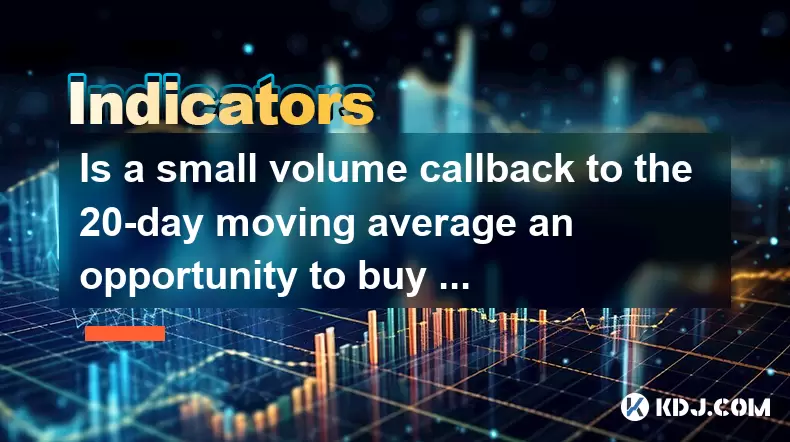
Is a small volume callback to the 20-day moving average an opportunity to buy low? What is the key to look at?
Jun 14,2025 at 02:28am
Understanding the 20-Day Moving Average in Cryptocurrency TradingIn cryptocurrency trading, the 20-day moving average (20DMA) is a commonly used technical indicator that helps traders assess the short-term trend of an asset. It calculates the average price of a cryptocurrency over the last 20 days and smooths out price volatility. When a coin experience...
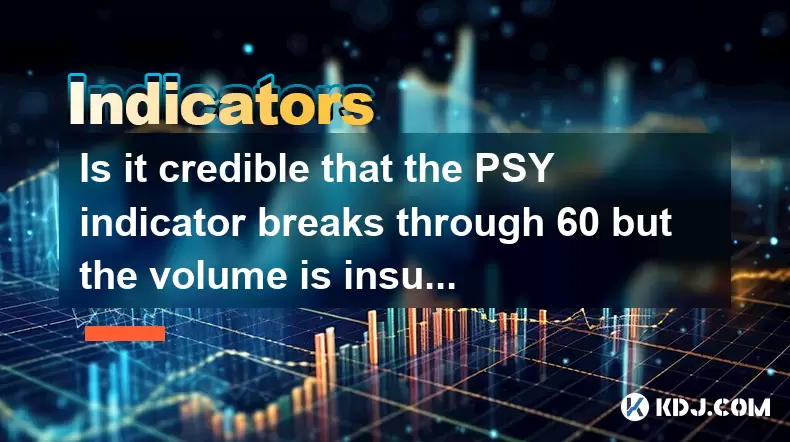
Is it credible that the PSY indicator breaks through 60 but the volume is insufficient?
Jun 14,2025 at 12:14am
Understanding the PSY Indicator in Cryptocurrency TradingThe Psychological Line (PSY) indicator is a momentum oscillator used primarily to measure the sentiment of traders and investors in financial markets, including the cryptocurrency space. It calculates the ratio of days where prices closed higher versus lower over a specified period, typically 12 o...
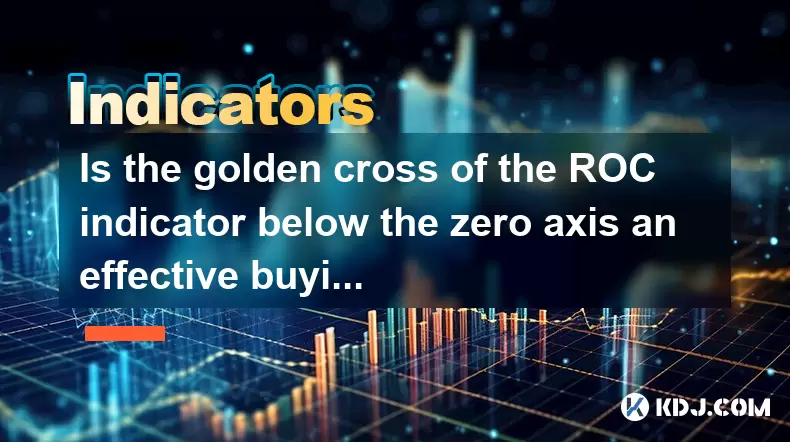
Is the golden cross of the ROC indicator below the zero axis an effective buying point?
Jun 14,2025 at 01:29am
Understanding the ROC Indicator and Its SignificanceThe Rate of Change (ROC) indicator is a momentum oscillator used in technical analysis to measure the percentage change in price between the current closing price and the closing price from a set number of periods ago. This tool helps traders assess the speed at which prices are changing, offering insi...

Will the RSI fall after the top divergence? How to improve the judgment accuracy?
Jun 13,2025 at 11:21pm
Understanding RSI and Top Divergence in Cryptocurrency TradingThe Relative Strength Index (RSI) is a momentum oscillator widely used in cryptocurrency trading to measure the speed and change of price movements. It typically ranges from 0 to 100, with levels above 70 considered overbought and below 30 considered oversold. In crypto markets, where volatil...
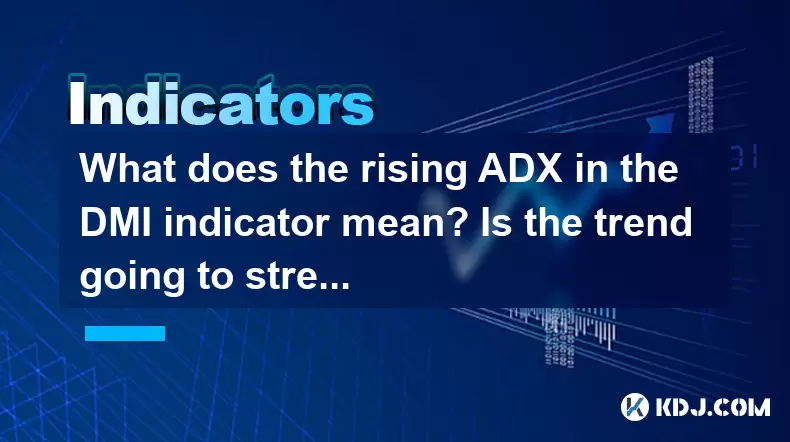
What does the rising ADX in the DMI indicator mean? Is the trend going to strengthen?
Jun 14,2025 at 02:14am
Understanding the DMI Indicator and ADXThe Directional Movement Index (DMI) is a technical analysis tool used to identify the direction and strength of a trend. It consists of two lines: the Positive Directional Indicator (+DI) and the Negative Directional Indicator (-DI). Alongside these, the ADX line measures the strength of the trend, regardless of i...
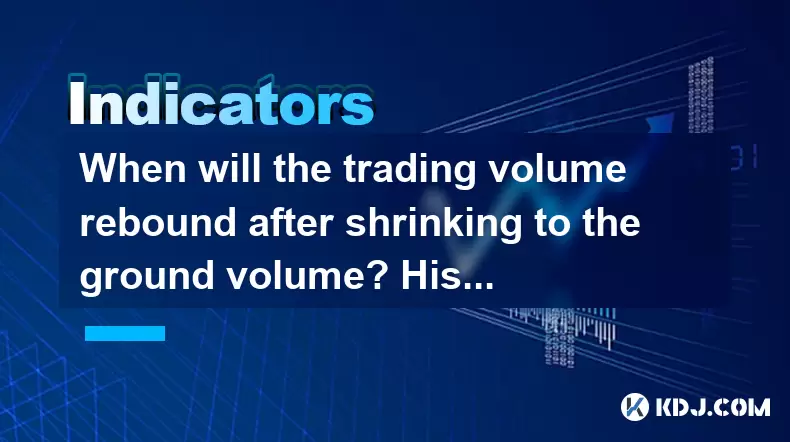
When will the trading volume rebound after shrinking to the ground volume? Historical percentile comparison method
Jun 13,2025 at 03:36pm
Understanding the Ground Volume Concept in Cryptocurrency MarketsIn cryptocurrency trading, 'ground volume' refers to a period when the trading volume of a particular asset or market drops significantly, often reaching multi-month or even multi-year lows. This phenomenon typically signals a lack of interest from traders and investors, suggesting that th...

Is a small volume callback to the 20-day moving average an opportunity to buy low? What is the key to look at?
Jun 14,2025 at 02:28am
Understanding the 20-Day Moving Average in Cryptocurrency TradingIn cryptocurrency trading, the 20-day moving average (20DMA) is a commonly used technical indicator that helps traders assess the short-term trend of an asset. It calculates the average price of a cryptocurrency over the last 20 days and smooths out price volatility. When a coin experience...

Is it credible that the PSY indicator breaks through 60 but the volume is insufficient?
Jun 14,2025 at 12:14am
Understanding the PSY Indicator in Cryptocurrency TradingThe Psychological Line (PSY) indicator is a momentum oscillator used primarily to measure the sentiment of traders and investors in financial markets, including the cryptocurrency space. It calculates the ratio of days where prices closed higher versus lower over a specified period, typically 12 o...

Is the golden cross of the ROC indicator below the zero axis an effective buying point?
Jun 14,2025 at 01:29am
Understanding the ROC Indicator and Its SignificanceThe Rate of Change (ROC) indicator is a momentum oscillator used in technical analysis to measure the percentage change in price between the current closing price and the closing price from a set number of periods ago. This tool helps traders assess the speed at which prices are changing, offering insi...

Will the RSI fall after the top divergence? How to improve the judgment accuracy?
Jun 13,2025 at 11:21pm
Understanding RSI and Top Divergence in Cryptocurrency TradingThe Relative Strength Index (RSI) is a momentum oscillator widely used in cryptocurrency trading to measure the speed and change of price movements. It typically ranges from 0 to 100, with levels above 70 considered overbought and below 30 considered oversold. In crypto markets, where volatil...

What does the rising ADX in the DMI indicator mean? Is the trend going to strengthen?
Jun 14,2025 at 02:14am
Understanding the DMI Indicator and ADXThe Directional Movement Index (DMI) is a technical analysis tool used to identify the direction and strength of a trend. It consists of two lines: the Positive Directional Indicator (+DI) and the Negative Directional Indicator (-DI). Alongside these, the ADX line measures the strength of the trend, regardless of i...

When will the trading volume rebound after shrinking to the ground volume? Historical percentile comparison method
Jun 13,2025 at 03:36pm
Understanding the Ground Volume Concept in Cryptocurrency MarketsIn cryptocurrency trading, 'ground volume' refers to a period when the trading volume of a particular asset or market drops significantly, often reaching multi-month or even multi-year lows. This phenomenon typically signals a lack of interest from traders and investors, suggesting that th...
See all articles

























































































